When we travel, there are always some places that stay alive in our memories. Either for the good moments we had, the landscapes or just by the experience in itself. My experience in Fraser Island was a combination of all kinds of good memories. It was three days in a very special island on the East Coast of Australia. One of the most unique places in Australia, and therefore also very touristic.
Why is Fraser Island so special?
Besides its stunning beauty, this island has a few characteristics that can’t find nowhere else in the world. Not only is one island with 120 of length, but it is also the largest sand island in the world! Yes, sand! And maybe due to this, the next fact won’t be that surprising, it has almost 250 km of almost continuous beaches. In the inner side of the island there is a tropical forest on sand dunes, and more than half of the perched lakes in the world!
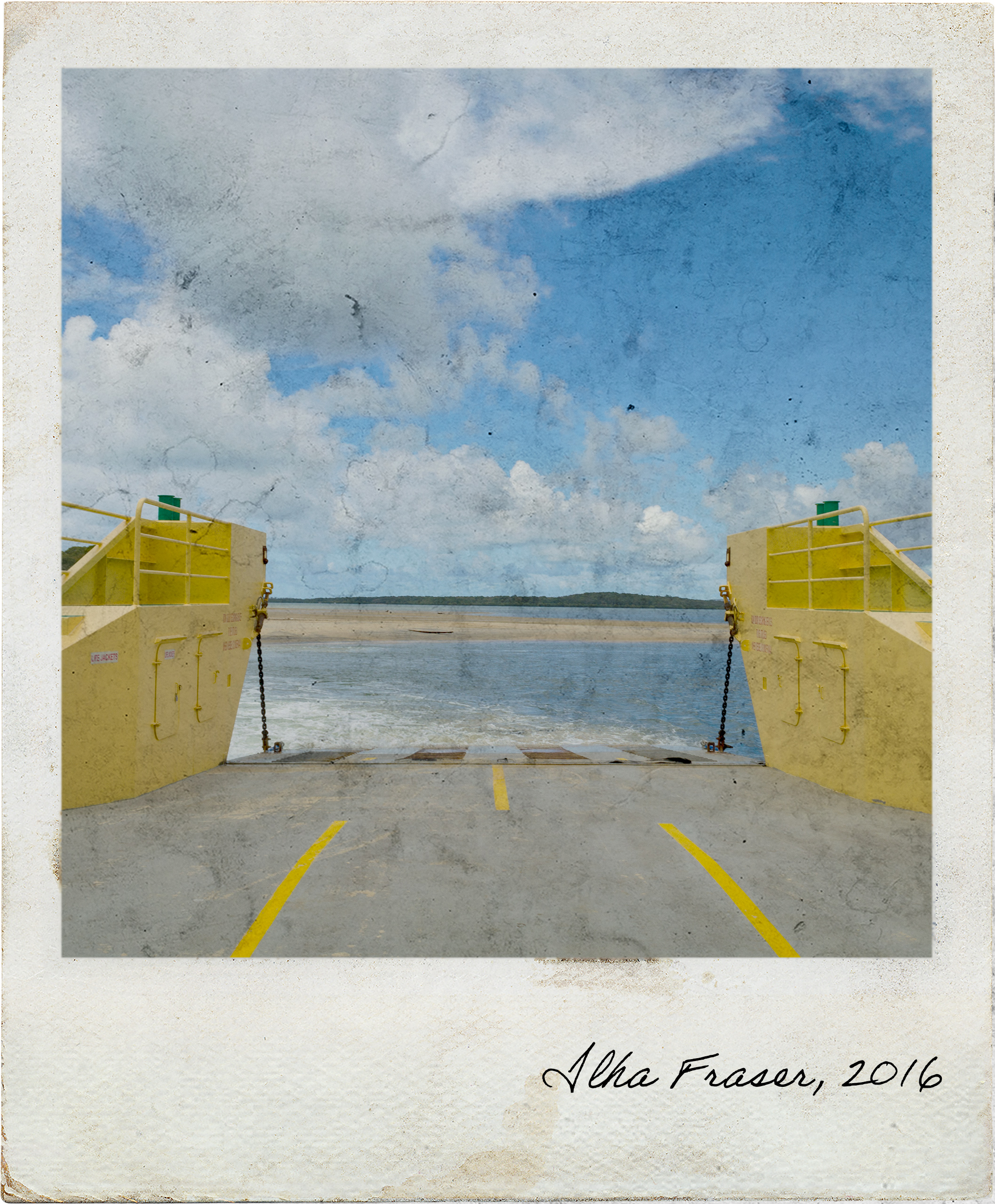
For several years scientists have been studying the dunes of Fraser Island. These dunes have survived climate changes and sea level raising for 700 thousand years! It is the only place on Earth where a tropical forest strives on sand dunes 200 meters above sea level. It is important to note that in this island, the trees can only find nutrients in sand and rain water, in conditions of very few nutrients. This is just one of the many things that make Fraser Island so special.
Fraser Island’s lakes are another important and special detail. Perched lakes are formed by several layers of tree leaves, bark and sand, that within a few centuries (millenniums?) those layers create an impermeable crust that retains rain water. These lakes are fresh water lakes, and just in Fraser Island there are around 40 lakes alike. Which means, about half of the lakes in the world with these characteristics are in this island.
Sites to visit in Fraser Island
When I thought of visiting Fraser Island I didn’t even had a clue of what to expect. I went there because the tourist office in Melbourne suggested it, and at first I only had it booked to stay one night at the island. The day before I changed my mind, and I ended up adjusting my plans for two nights, and honestly, that was one of the best decisions I made in Australia!
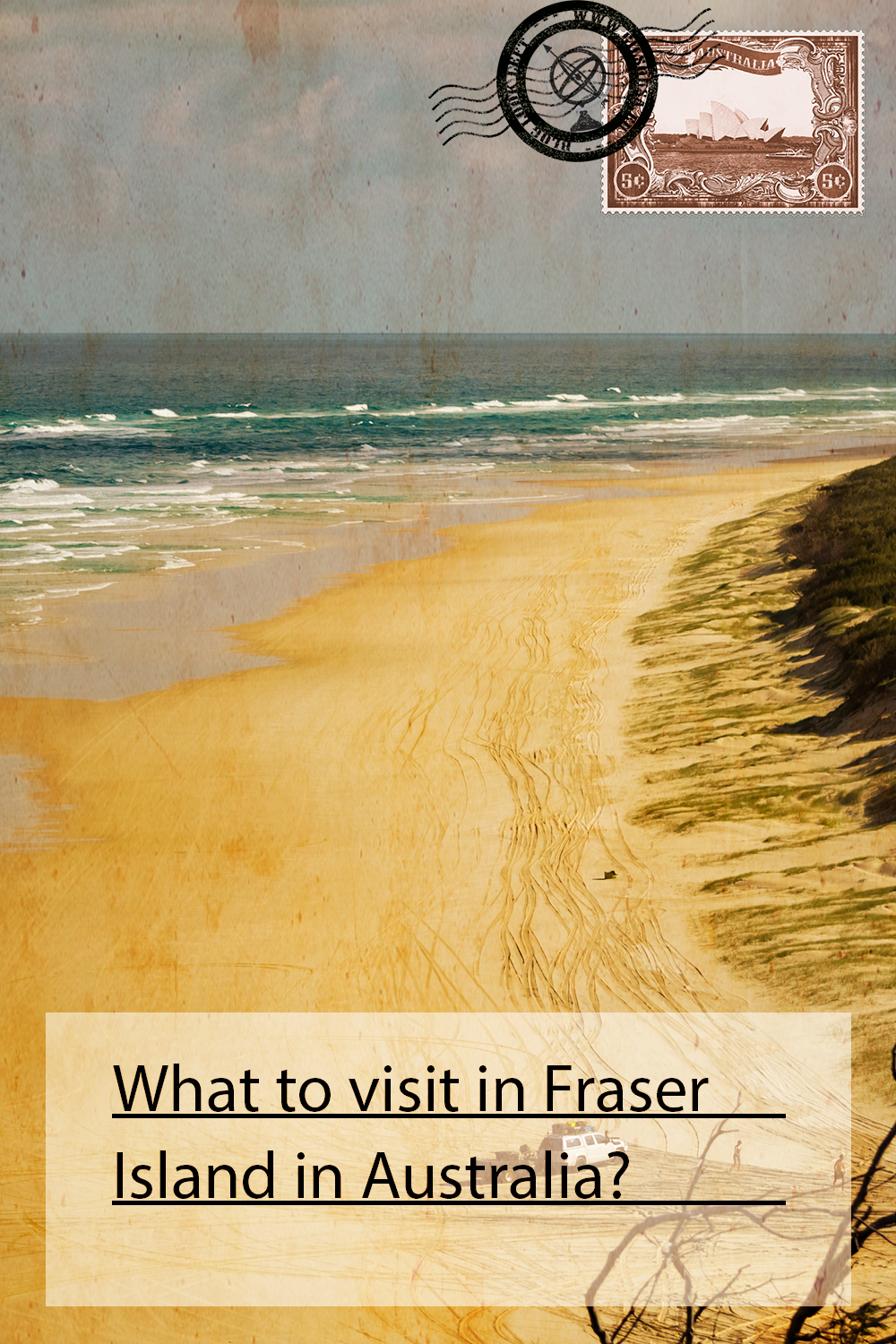
Even two nights in Fraser Island I don’t think it’s enough. We visited the top places recommended in all guides, which I will also recommend below. Though, two days wasn’t enough time to explore a bit further and go out of the usual routes. If you have the chance, try to stay at least three nights.
Lake McKenzie
Lake McKenzie is the most famous lake in Fraser Island, and one of its main characteristics it’s its crystal clear waters that gives you a sensation of floating in the air.
Like I mentioned above, the lakes in Fraser Island share a common special characteristic, which is being way above the fresh water line. Which means, the lake in these lakes is rain water! Unfortunately, the (natural) acidity of these waters make it unsuitable for any kind of life, either fish or plants. However, it is also this lack of natural garbage (dead fish, feces, rotten plants, etc) that make this lake even more crystal clear. We lose some, we win some…
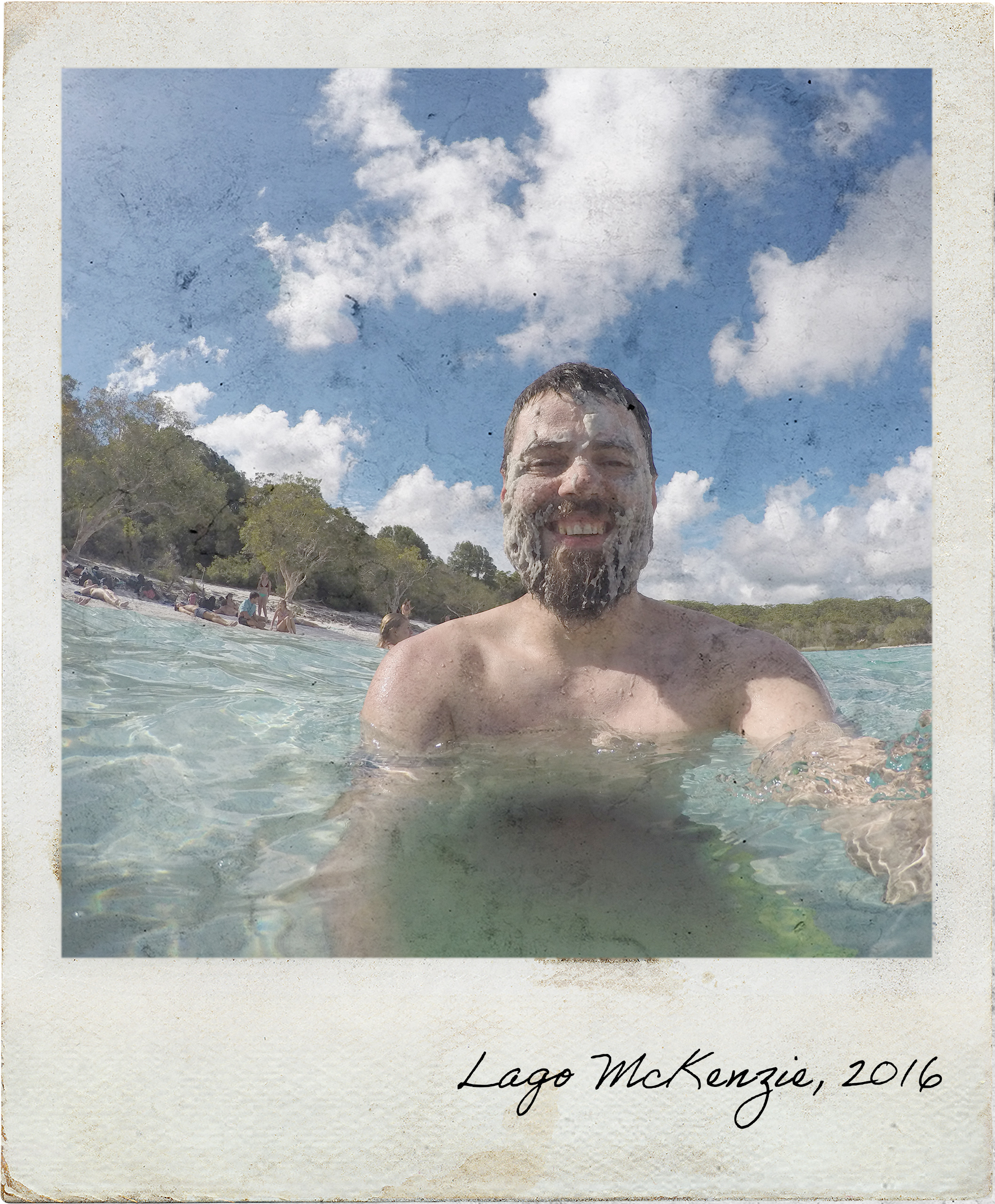
Another characteristic of this lake lies in its margins. The beach’s sand is pure silica, therefore the extra whiteness of the beaches. No, the photos are not edited, the sand is really that white! The silica sand is so pure that the heat isn’t absorbed, which is perfect for those who love to walk barefoot and feel the sand without being burnt! And who doesn’t love to feel the sand passing through their toes?
Unfortunately, when something is so beautiful and popular, other issues arise. The tourism has increased a lot, bringing a lot of people to the lake. Opposing to the lack of natural garbage, which keeps the purity of the water, the tourists have been introducing other kind of garbage, like the use of sun screen which can compromise the beauty and quality of the lake.
With approximately 1,2 km of length and 5 meters of depth, swimming at the Lake McKenzie is almost like swimming in a gigant pool of an incredible beauty. An opportunity not to miss!
Eli Creek
Eli Creek is the biggest fresh water creek of the east coast of Fraser Island, and another popular site to visit. It is in a beach called 75-mile beach, very close to another very popular site, the wreckage of SS Maheno ship.
My visit was planned, but unexpected for me. I simply didn’t know what to expect, we’ve been instructed to leave any valuables in the jeeps that were not waterproof and to go through the walkway alone the creek. I had no idea that I would go back to the beach, but floating down the creek!
The water flow is so intense that floating down the creek is an experience to have. Most people who visit Eli Creek do it, and talking from experience, it is amazing! Relaxing, with a few parts a with a bit more depth, but rarely over 1 meters, and always with a continuous flow down the creek!

With an average flow of 80 million liters of fresh water a day, it is a great source of fresh water to those who decide to do camping in the area. They say that it is one of the purest waters in the world, being filtered by the island’s sand for 100 years until it reaches the source.
It isn’t just a place of cult for the tourists, but also for the natives. Once upon a time it was a meeting point, and also a place where the natives baptized their younger ones.
And of course, and you probably already noticed, it is also one of the best places to swim in the island, besides the Lake McKenzie and the Champagne Pools.
SS Maheno Wreckage
SS Maheno Wreckage is one of the most visited sites on the island, mostly because of the amazing photos one can take! The site is tagged as dangerous, after all it is a ship wreckage and accidents can happen. One of the problems that can happen when visiting the wreckage is being stuck on the sea side. If the tide raises too fast it becomes quite dangerous to get out of that side of the ship. I think no one wants to be dragged into an ocean filled with sharks and jellyfish…
The SS Maheno ship has a very interesting history, it started as a luxury ship, and during the First World War it was used as a hospital ship. With frequent trips to Australia and New Zealand, and later to Europe, to transport injured people between France and the United Kingdom.
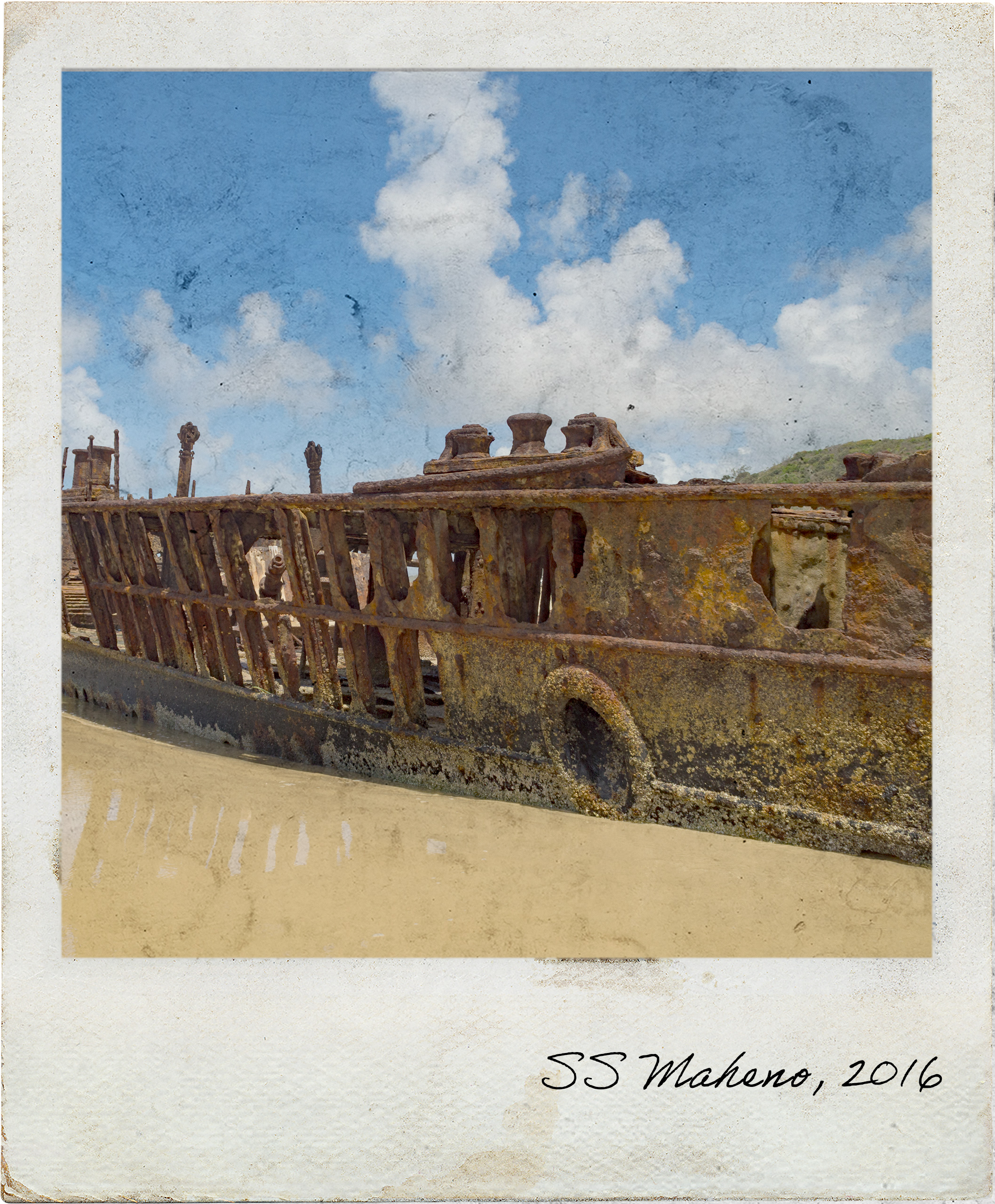
After its service during the First World Wall, the SS Maheno went back to its original service. And it stayed like that for several years, until 1935 that its owner decided to sell it to the Japanese… And the history almost ends here. The SS Maheno never reached Japan…
When the SS Maheno was being towed to Japan it was caught in the middle of a cyclone, about 50 miles of the coast of Fraser Island. The tribulation sent several rescue help requests, but only after 3 days they were found stranded at the beach. There were made several attempts to tow the ship back to sea, but obviously in vain. And there it stayed, as another piece of history in Fraser Island, for the tourists to enjoy and photograph.
The Pinnacles
This is one of the places I visited that I deeply regret not knowing about nor being prepared for this trip. No explanation was given of how important and unique that place is, they simply took us there and just passing by…
The Pinnacles are sand cliffs of several colors and tones, brown, orange and yellow. Which are an unique characteristic of this place on the 75-miles beach. There are several theories about the formation of these cliffs, being the most acceptable a mix of sand and clays, and that the colors are so diverse due the iron minerals predominant in that area.
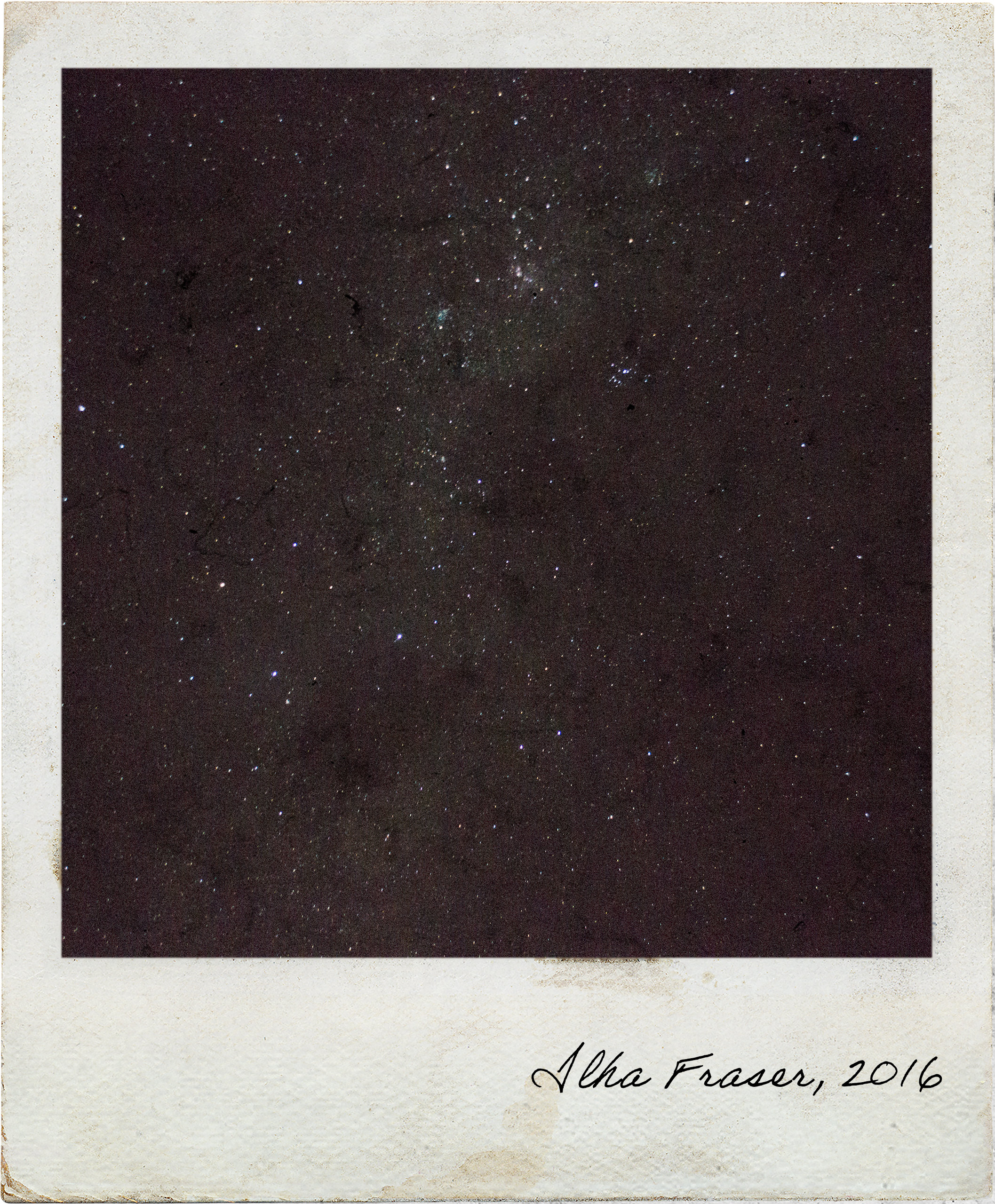
Considering the size of the island, and the fact that these cliffs are made of sand, these kind of landscape changes are indeed incredible. The Pinnacles deserve a lot of photos, and a very curious eye.
Indian Head
Indian Head is the most eastern point in Fraser Island, and they say that in clear days you can see sharks from up there. We had an amazing day, but no sight of sharks…
The Indian Head is at the very end of the 75-mile beach, and to get to the cape itself you still need to walk a bit, which the jeeps will be parked at the beach. According to what I read, the best time to visit Indian Head is during winter, if the goal is really to see dolphins, turtles and sharks. Maybe that explains why I didn’t see anything…
There are several theories regarding the origin of this cape, one of them is that the cape seen from the east beach reminds of the head of a North American Indian. Another theory says that it was the place where Captain Cook saw the first natives of the island while he was exploring in 1770. “Indian” could have been the name they gave to the island’s inhabitants.
But regardless of the theory, either in Summer or Winter, it is a place worth visiting. The hike to the top makes it worth every second! As soon as you look down you can see how long the 75-mile beach is!
Champagne Pools
A bit after Indian Head we reach the Champagne Pools. Obviously they are not pools filled with champagne… They are natural pools that due to the rock formation and the strong currents, the impact from the waves creates a champagne effect inside the pools. It really gives the feeling that we are inside a pool filled with champagne, hence the name.
It is considered as the safest place to swim in salt water in Fraser Island, since the open sea has way too many dangers… It isn’t just the safest place to swim, but it is also a really beautiful one. While we bathed there we could see fish and mollusks swimming between us, and also just enjoying the landscape and relaxing a bit.
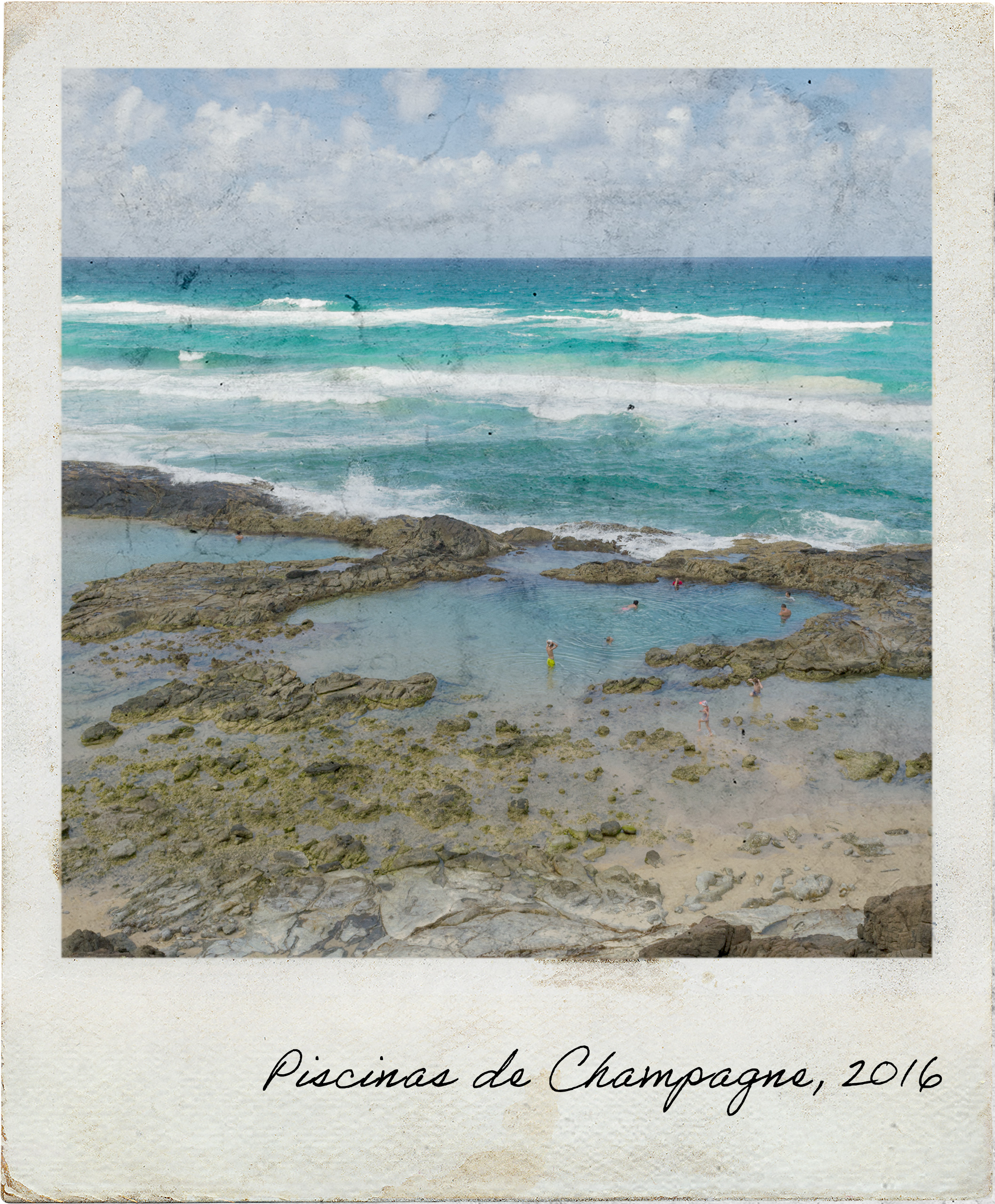
But keep in mind that there are still some risks, like slippering and falling from the rocks. It isn’t that fun to be surprised by a stronger wave and being pushed through the rocks, and yes, that happened to us… Thankfully nothing serious happened, just a few small scratches. But one must be careful. And swimming outside the pools? At your own risk and responsibility, but even experienced swimmers can feel difficulties due to the strong currents in that area.
And this was the most north point we visited in the island. There are groups that go beyond that, but we weren’t that lucky.
Where is Fraser Island?
How to get to Fraser Island?
Fraser Island is about 300 km north of Brisbane, and just 15 km of Hervey Bay. There are several regional flights from several parts of the country connecting to Hervey Bay and Brisbane. Then I highly recommend to join an excursion in 4×4 jeeps.
One of the most popular starting points is Noosa, however that’s still a bit far from Fraser Island. I started my adventure from there, but until the ferry it still took us a few hours, which gave us a feeling of part of the day “wasted”.
Considering you can’t drive on the west coast of the island, the accesses from Hervey Bay might be a bit tricky as well (or interesting, depending on your point of view).
Our entry point to the island was from Inskip Point, very close to Rainbow Beach. It is in this area that I recommend to stay the night before. Probably even better in Tin Can Bay, where you can see dolphins at the beach, very close to us! But there isn’t much to do in this area either, it is a game of win-lose, and Noosa has a lot of offer.
When we departed, we’ve been told that nowadays you can’t get in the island by car unless you have a special permission, therefore, the best options are jeep excursions. However, this isn’t quite true, but it is still complicated to rent a car to drive in the island, considering that most rent-a-car companies forbid driving in the island due the amount of salt that can damage the cars.
Recommendations regarding Fraser Island
If it is part of your plans to drive without being part of an excursion, then you must pay special attention regarding the areas where you can drive. The island does not have roads, the paths are either through the beach or trails, some beaches are even interdicted to cars. The west coast is almost completely restricted to 4×4 jeeps. The sand is soft and easily a jeep can get stuck there, or even worse…
You can camp at the beach, but there are also areas designed for that. The ideal is to camp in a close area, to avoid issues with the dingos. Usually dingos are not violent, but their wild instincts can make some damages if they feel threatened.
Swimming at the sea? Nope, no way! Mostly in Summer! Why? Because in that area of Australia there are a lot of dangerous jelly fish, some that can even cause death. There’s also the risk of sharks, but those aren’t even considered as a danger, even if the extensive list of shark attacks in Australia, there are very few yearly. Sharks only come third in the list of most dangerous animals in Australia, and they don’t even mention deaths, only the risk that they seem to cause. So, yes, beware of jelly fish!

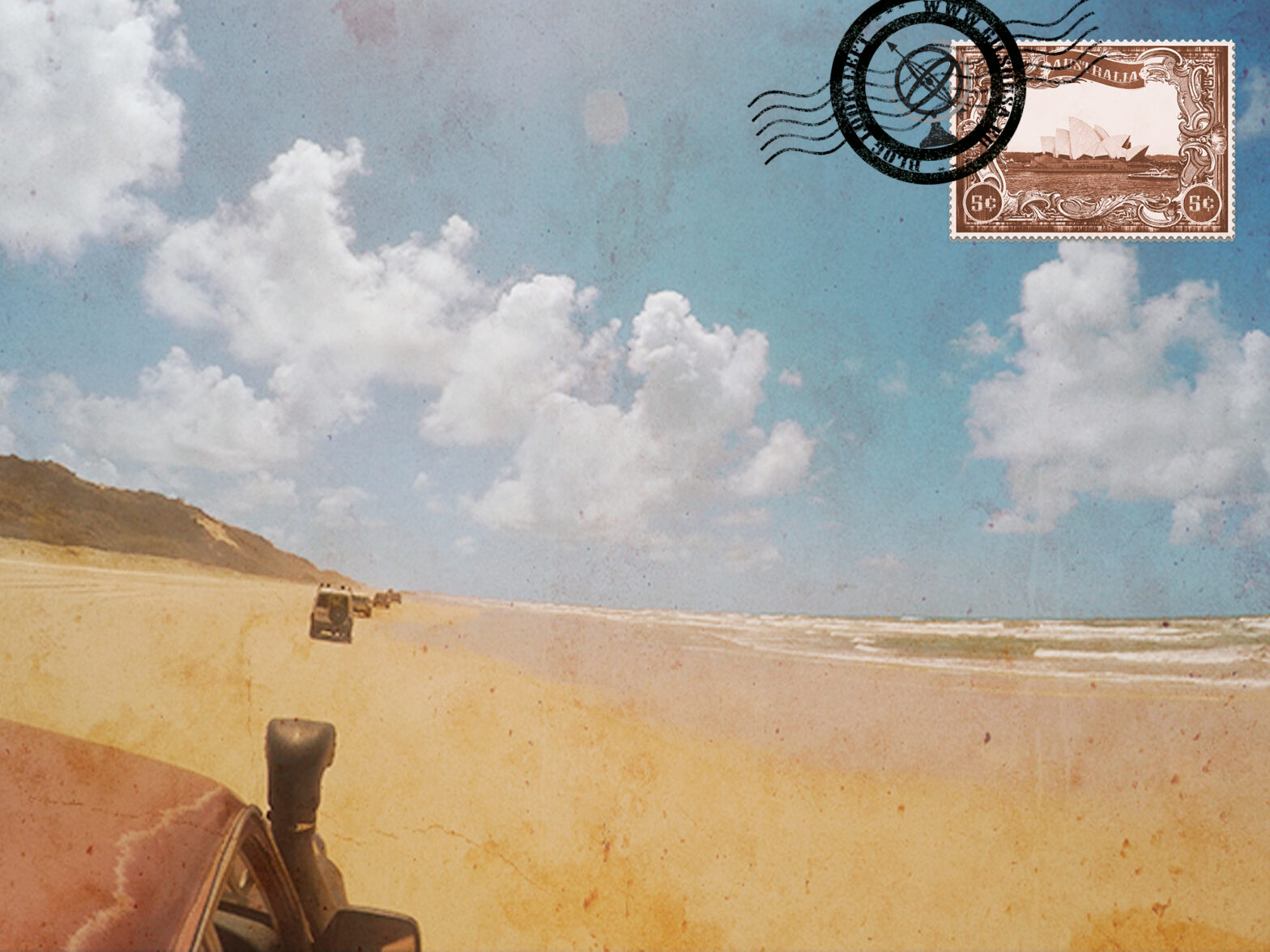

Leave a Reply